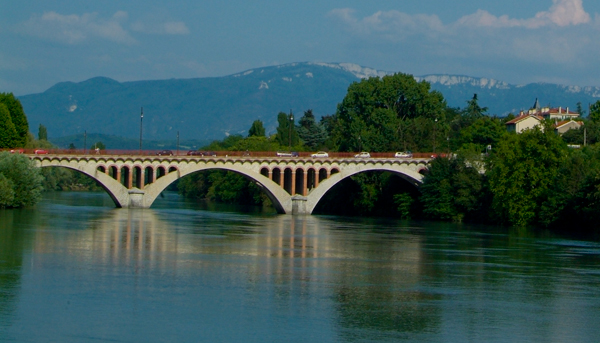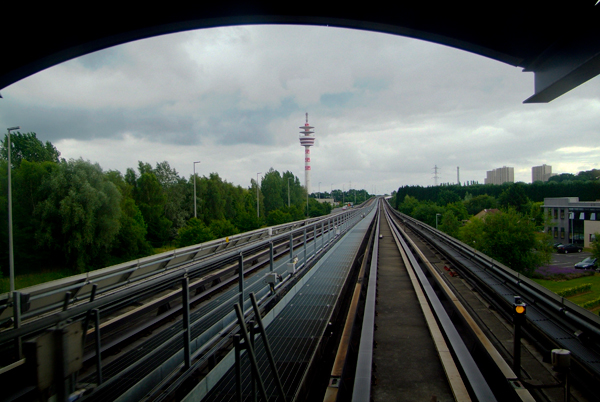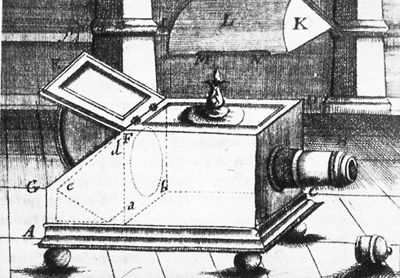 |
Sequence viewing > Aesthetics Index - Resource - ©
Lloyd Godman
Linear perspective
Diagonals and Linear perspective
- we perceive diagonal lines as receding into the distance.
| The viewpoint selected for this image offers no sense of this. |
 |
However the strong diagonal
lines in this image, also of a bridge create a extraordinary sense of depth.
As an example of one-point perspective, the diagonal lines converge on
a single point on the horizon called the vanishing point. In one-point
perspective, the horizontal and vertical lines are parallel with the sides
of the image. |
 |
Vanishing
point
Because
the camera has a single lens, converging lines in and image point to
a single vanishing point - they imply a sense of distance an perspective
in an image. While these lines are often associated with architecture
they can apply to any subject where there are lines or visual elements
like a series of points that contribute to
a line. Vanishing point is associated with the camera view point and
also perspective.
Before
the use of perspective and single point perspective, paintings and drawings
typically sized objects and characters according to their spiritual
or thematic importance, not in relationship to distance. In some areas
like Medieval art, the work was designed to be read as a group of symbols,
rather than seen as a coherent realistic picture.
 |
Works
from this period that represent architecture are a hodgepodge
of conflicting lines in every direction. The optical basis of
perspective was defined in the year 1000, when the Arabian mathematician
and philosopher Alhazen, in his Perspectiva, first explained that
light projects conically into the eye. This was, theoretically,
enough to translate objects convincingly onto a painting, but
Alhalzen was concerned only with optics, not with painting. From
about 1400 artists began experimenting with perspective. Artists
began using small portable versions of what became known as the
camera obscura to aid them in drawing realistic representations
of portraits, landscapes and architectural subjects. A thin piece
of transparent paper was laid on the glass where the image formed
and the artist traced the outline of the scene they wanted onto
the paper. The camera obscura was directly responsible for the
fascination and understanding of geometric perspective developed
during the Renaissance and the rebirth of Classical culture. |
So perspective, viewpoint, vanishing
point are all integrally linked to the camera.
|